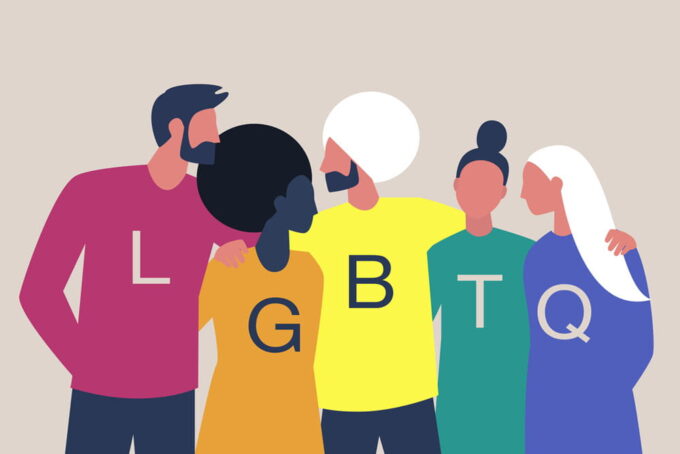
Making the metaverse a safe space for everyone
As organizations begin to incorporate the metaverse into their strategies, CEOs must ensure that the new technology supports equity, inclusion and diversity at every opportunity....

by Ina Toegel Published 1 June 2023 in Diversity, Equity, and Inclusion • 6 min read
People who do not identify as LGBTQ+ often perceive the concept of “coming out” to be focused on a one-time event. However, the reality for LGBTQ+ people in the workplace is that they must undergo the process whenever they interact with someone for the first time.
A colleague’s enquiry about your plans for the weekend or your family life may seem innocuous but, for an LGBTQ+ person, this type of question can provoke internal turmoil. Have I revealed my sexual orientation or gender identity to this person? Is now the time to do so? What are the risks of coming out to them at this point? Do I feel comfortable doing so? What are the risks of not coming out?
With each first-time interaction, LGBTQ+ executives are obliged to decide between concealing intrinsic parts of their identity or potentially exposing themselves to a change in how their colleagues treat them, personally and professionally. This constant, meticulous re-examination of one’s own identity, and the emotional and mental exhaustion such a process entails, is known as “the cost of thinking twice.”

This idea was first introduced into the diversity, equity, and inclusion (DE&I) space by Claudia Brind-Woody, Managing Director at IBM. At an LGBT conference in 2013, Brind-Woody discussed the amount of energy that LGBTQ+ employees are obliged to put into a single interaction, alongside the substantial repercussions of grappling with each decision to come out to a colleague or not, for both individual and organization.
While recent research from Deloitte indicates there are promising signs of change, with an overwhelming majority of companies categorizing LGBTQ+ inclusion as a top HR priority, less than half of respondents have come out to the majority of their colleagues. Anxieties around coming out to colleagues can infiltrate all areas of working life, from the possibility of social judgment and exclusion to fears of a detrimental impact on career mobility.
This wariness is justified. According to a recent BCG study, around four in 10 LGBTQ+ executives still routinely encounter discrimination in the workplace, This is significant from a business as well as a purely human perspective, as the harmful repercussions of this toxicity for the individual’s mental and emotional wellbeing can impair their ability to perform at work. LGBTQ+ executives who face discrimination on a regular basis are less productive, less innovative, and feel less valued at work than those who don’t. They are also 13 times more likely to quit a role due to a non-inclusive culture and seven times more likely to reject a job offer for the same reason.

From confronting bias to achieving breakthrough: unleash the power of inclusive leadership.
However, a failure to come out at work carries its own price. By hiding their LGBTQ+ identity, these executives may suffer feelings of self-betrayal, on top of the mental fatigue from constantly disguising their identities. They also risk their colleagues’ detecting their withholding of information and consequently coming to perceive them as “inauthentic.”
A further undesirable possibility is that LGBTQ+ executives enter a state of self-imposed isolation through avoiding situations that threaten exposure of their true identity. These executives prevent themselves from forming deeper social connections with their colleagues.
LGBTQ+ people who work in an environment in which they feel comfortable to be out feel over twice as safe as those who feel they should not come out in their workplaces. An inclusive environment also mitigates the cost of thinking twice, reducing the pressure and stress on individuals. This allows LGBTQ+ employees to be their authentic selves at work, which, naturally, means that they are happier and healthier.
The positive effects on LGBTQ+ executives translates to their work, increasing their productivity and creativity, as they feel empowered to contribute without inhibitions. As they come to feel valued at work, LGBTQ+ employees develop a greater sense of loyalty to their organizations.
A failure to come out at work carries its own price.
There are two sides to creating an inclusive environment at work: the formal and the informal.
The formal side comprises the rules and policies that ensure the safety and security of your employees against discriminatory behavior. These changes are clear and defined, and undoubtedly the area in which most businesses have made significant progress in their DE&I development. Examples include:
The informal side is much less tangible and is consequently harder to define. It focuses on the everyday culture of an organization, including the language with which colleagues communicate with each other. Do people use gender-neutral language in a social context (e.g., enquiring about a “partner” instead of assuming the gender of a significant other), and use co-workers’ pronouns respectfully? How much visibility and support is given to LGBTQ+ initiatives? Do colleagues flag potentially discriminatory behavior and suggest ways to eliminate it?
Senior leaders need to ask themselves these questions regularly. While a supportive and progressive HR department is pivotal to promoting inclusion in the workplace, it is vital that senior leaders support their LGBTQ+ employees by driving inclusivity.
In recent research from Deloitte, almost three-quarters of LGBTQ+ executives surveyed see internal improvements in workplace inclusivity following their organization’s decision to displays external, visible support of the LGBTQ+ community as part of their branding. As the public faces of the company, the CEO and leadership team must be aligned with this inclusive brand message and ensure that it becomes integrated into corporate culture.
Given that LGBTQ+ executives are underrepresented at every level of management, most notably at the highest levels, it is likely that many senior leaders don’t understand the experience of being an LGBTQ+ person at work. While they may comprehend the overall importance of inclusion, bridging the gap to true empathy is challenging.

Business leaders who don’t identify as LGBTQ+ may feel hesitant to speak openly to colleagues and publicly to the business media if they feel they lack knowledge of the subject (and are perhaps not even confident of using the appropriate language).
Senior executives should approach inclusion as they would other areas of business change, such as digital transformation. Surround yourself with experts. Just as you would look to digital natives to help you understand a field in which you personally lack expertise, you should look to experts in LGBTQ+ inclusion to advise and support you, your team and your business in this initiative.
As new, increasingly diverse generations enter the workforce, senior leaders must ensure that all employees are educated around discrimination and inclusion. Only when the whole business is working together to create a working environment that supports LGBTQ+ employees will they feel truly liberated from the need to think twice.

Professor of Leadership and Organizational Change at IMD
Ina Toegel’s research focuses on team dynamics, organizational change management, top management teams during corporate renewal, and founder influence. She directs the Leading High-Performance Teams program which supports executives in achieving team flow and transforming a group of individuals into a high-performing dream team.

From confronting bias to achieving breakthrough: unleash the power of inclusive leadership.

3 November 2023 • by Alyson Meister in Diversity, Equity, and Inclusion
As organizations begin to incorporate the metaverse into their strategies, CEOs must ensure that the new technology supports equity, inclusion and diversity at every opportunity....

27 October 2023 • by Ginka Toegel in Diversity, Equity, and Inclusion
It’s time to debunk outdated myths around women lacking confidence and not asking for pay rises and focus on the real problem: societal misperceptions. ...

9 October 2023 • by Natalia Olynec, Lars Häggström in Diversity, Equity, and Inclusion
With a growing number of employees holding their organizations to account over sustainability commitments, the onus is on HR departments to explain a firm’s purpose and impact if they are to attract...

9 October 2023 • by Martina Fuchs in Diversity, Equity, and Inclusion
Executives must do more to change the balance of power in the workplace, says BLM co-founder...
Explore first person business intelligence from top minds curated for a global executive audience